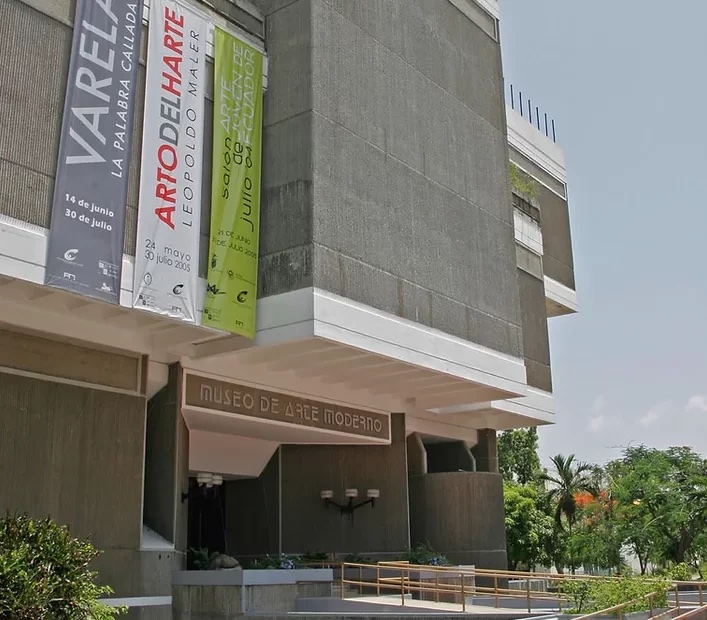Fernando Varela exhibited at the Museum of Visual Arts of Uruguay not only his most recent works, a logical selection, but also a production consistent with the demands of the institution and its director, Ángel Kalenberg.
To mention Ángel Kalenberg is to mention one of the pillars of criticism, essays, and art publishing, as well as literature. He is a well-rounded intellectual, highly experienced, and highly respected and appreciated.
The Museum of Visual Arts (we believe its name has changed to give greater space to contemporary art) in Montevideo has been under his wise direction for many years, and he is unaware of the concessions.
Therefore, this exhibition represents an important step in relations between Uruguay and our country, for future exchanges, provided the same technical and aesthetic quality is maintained. There is also no doubt that this recent production by Fernando Varela, difficult and conceptual, sophisticated and perfectionist, was the most appropriate among the successive stages of a career that was uncompromising in terms of research and level.
We were intrigued by Ángel Kalenberg's in-depth essay, and by the way he handles a retrospective study of Fernando Varela's work, as if he knew it in its breadth and depth. We would like to quote the following commentary, a choice we will explain later: "Apparently, Varela draws on the power of the tropics, but underlying this, a connection with his past can be detected, like a stubborn will to preserve his native identity. Because of this, he proposes a formal compromise of extremes never suspected in the repressed modernist era."
We are, of course, infinitely pleased that Fernando Varela's Uruguayan origins are highlighted, under the "pen" (today a metaphor...) of an enlightened fellow citizen. Often, due to the narrow-mindedness of some local sectors, these roots have been objected to, rather than considered part of the originality and solidity of Varela's expression. And certainly, those muted shades, of stealthy luminosity, those signs that often require decoding, that physical and semantic importance of the word, although they are peculiar and original components, emerge from subconscious memory. Torres García, whose universality grows irrepressibly, has left his spiritual and aesthetic imprint. Every good artist has parents and ancestors.
The catalogue also includes an essay by Ricardo Ramón Jarne, another Dominican “by adoption,” which concludes gloriously:
"Varela's literary cosmology is one in which, if he weren't a master of color, form, and matter, if it weren't for the aesthetic power of his works, we would say that Varela doesn't paint, he writes and composes music." A very apt inference, since Fernando possesses a vast musical culture, plays the piano... and who knows if he doesn't compose!
Let's remember that one of the artist's most powerful exhibitions was presented in the entirety of the Institute of Spanish Culture, when it was directed by Ricardo Ramón, and that display of installations, painting, sculpture, and ceramics, in our opinion, gave rise to the current creative era. The active participation of the viewer—if they had sensitivity and intelligence—completed the artistic proposal.
The Exhibition in Montevideo
Obviously, an excellent location, in perfectly lit and well-equipped rooms, gave Fernando Varela's works the aesthetic dimension they deserved. Clarity, spacing, and harmonious placement of two- and three-dimensional elements distinguished the museographic level, favoring a visual path, dispensing with any stagecraft. There was an optimal fit between the pieces on display, the environment, and the installation style.
This same series, "The Silent Word," had been successfully exhibited at our Museum of Modern Art. Among its qualities was an invitation to engage in a reading of the work. A furtive glance was impossible; the surface, the spaces, the material, and evidently that subliminal world of letters demanded attention and reflection. The chromatic and dimensional subtlety was also impressive. We will not forget the satisfaction of the director, Maria Elena Ditrén, her smile at each painting and sculpture. At the Montevideo Museum of Visual Arts, what was exhibited at our museum is not simply repeated. New works, very recently completed, were added, although neither the title nor the concept of the discourse in this visual collection have changed.
We are pleased to reaffirm some of our reflections on "The Silent Word." We have always valued it as an exhibition that is not traversed, but drawn back. In Fernando Varela's visual proposals, mystical signs arouse intense curiosity and become a source of meditation... if not obsession. What mysteries lie behind these media, both visual compositions and graphic decompositions? If we choose to privilege the letter, the word, the (anti)text, or the "a-text," we go beyond the immediacy of the glance; it is succeeded by the mechanisms and potentials of the mind. We are aware that an ignorant, "anti-philosophical," or someone simply seeking ease of appreciation, remains oblivious to the plural meaning of Varela's work and its enriching interpretations, today as yesterday.
And the marvelous Alphabet, also exhibited in Montevideo, that polyptych, serial and different, remains one of the seminal works. The artist, as literate as he is a lyricist, teaches us to read and see. Through tonal ordering, he underlines the importance of writing, omnipresent and indispensable. He arranges it methodically and repeatedly, then unleashes us into the disordered territory of liberated letters—plot, fabric, biological medium?—with his paintings, he delimits fields and encloses typographic adventures!
We know that Ángel Kalenberg has been deeply interested in "The Silent Word," and we await critical reactions. And hopefully, this presentation at the Museum of Visual Arts in Montevideo will be the first stop on a tour of other cities and institutions in South America.

